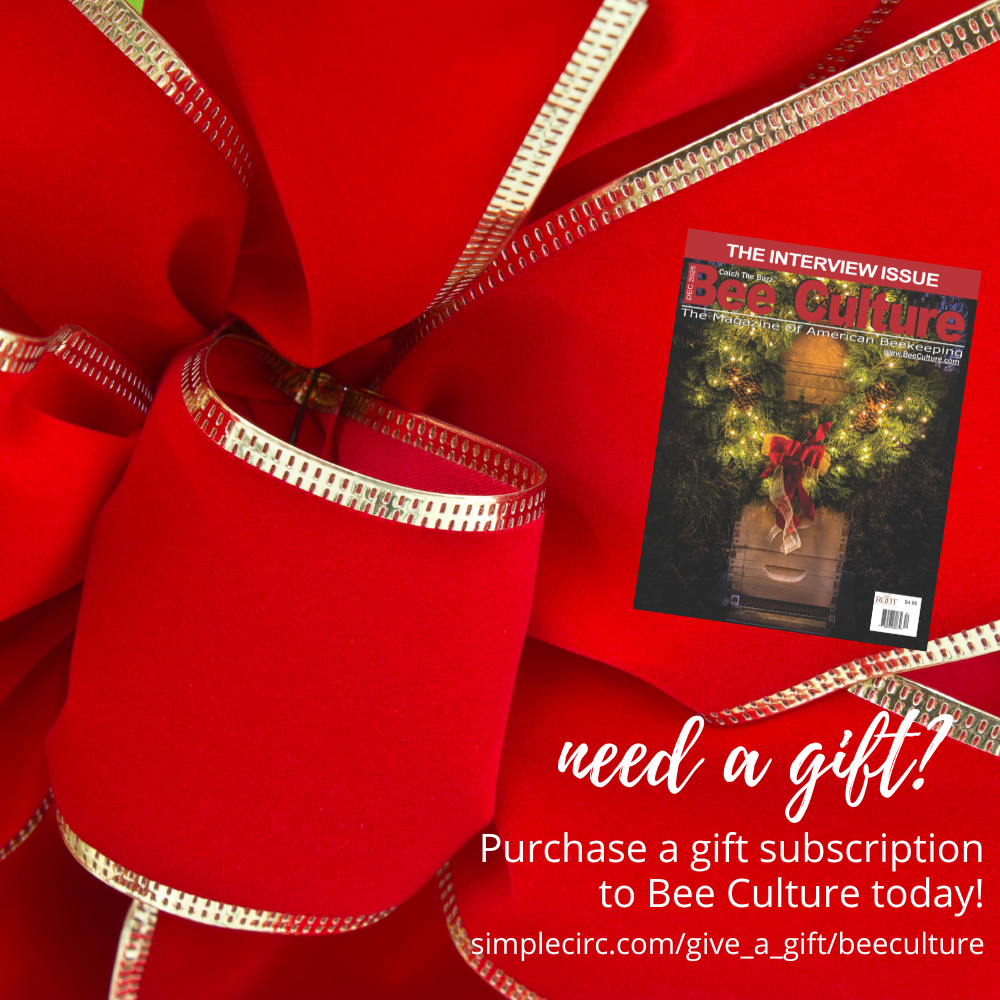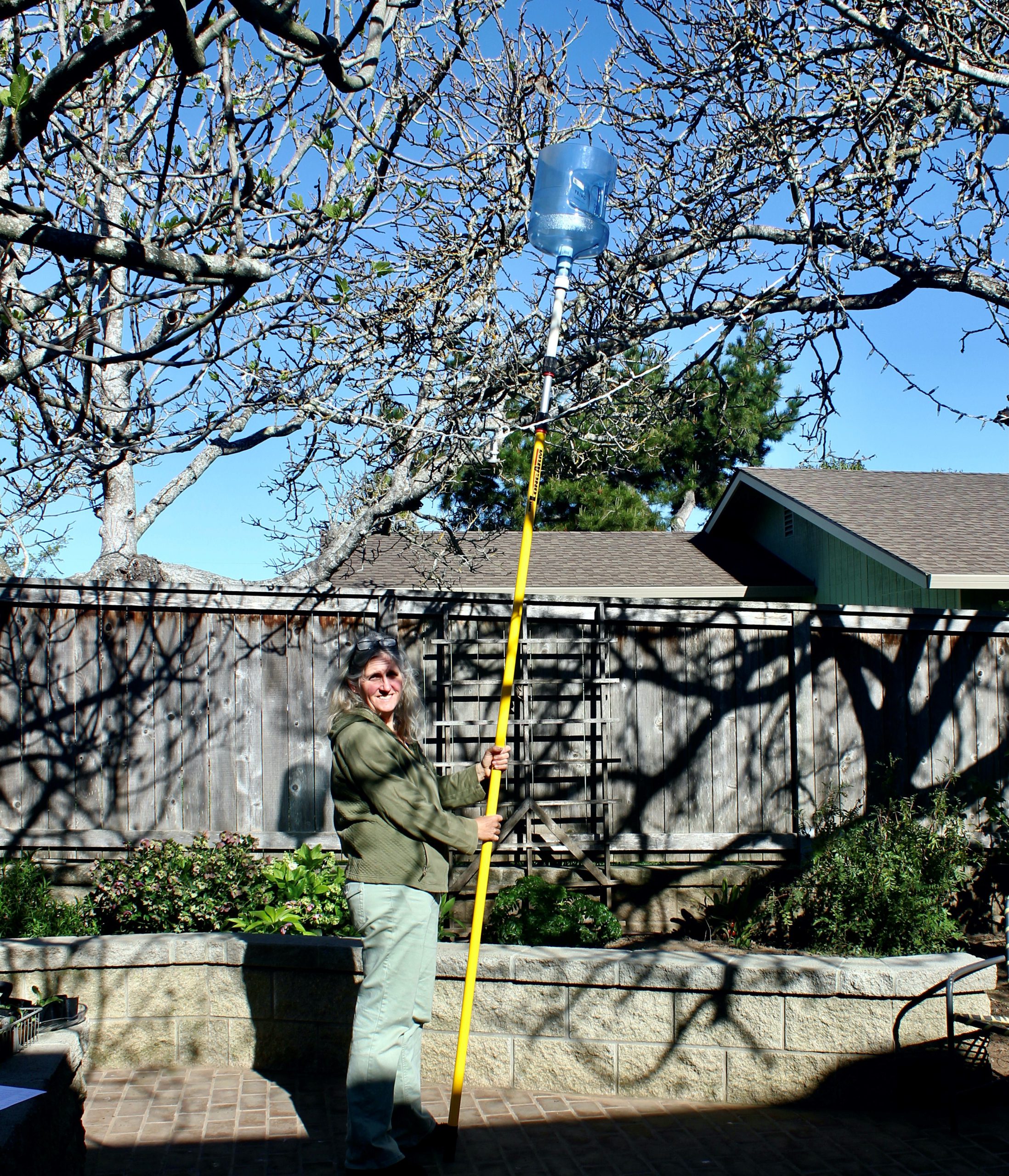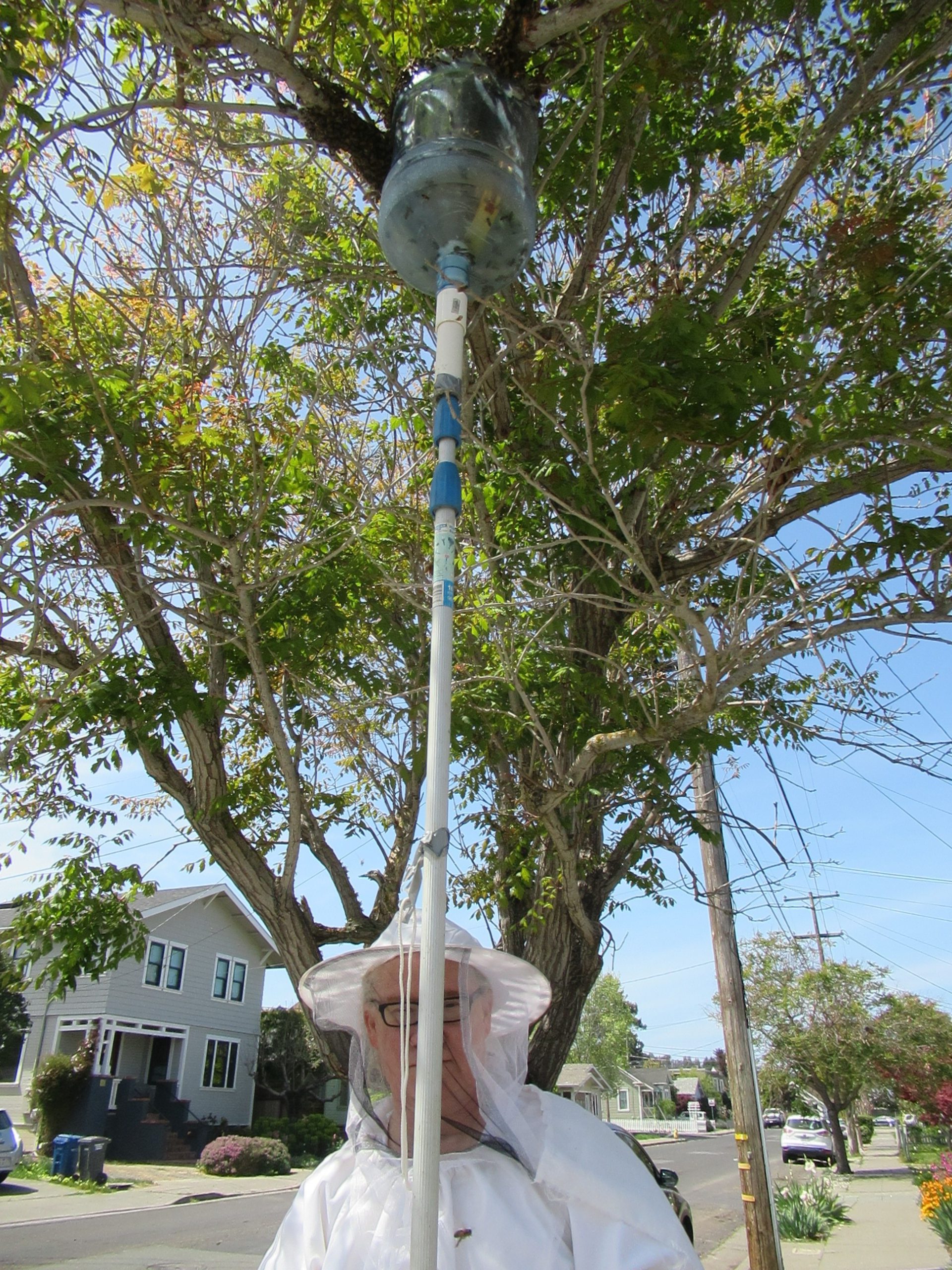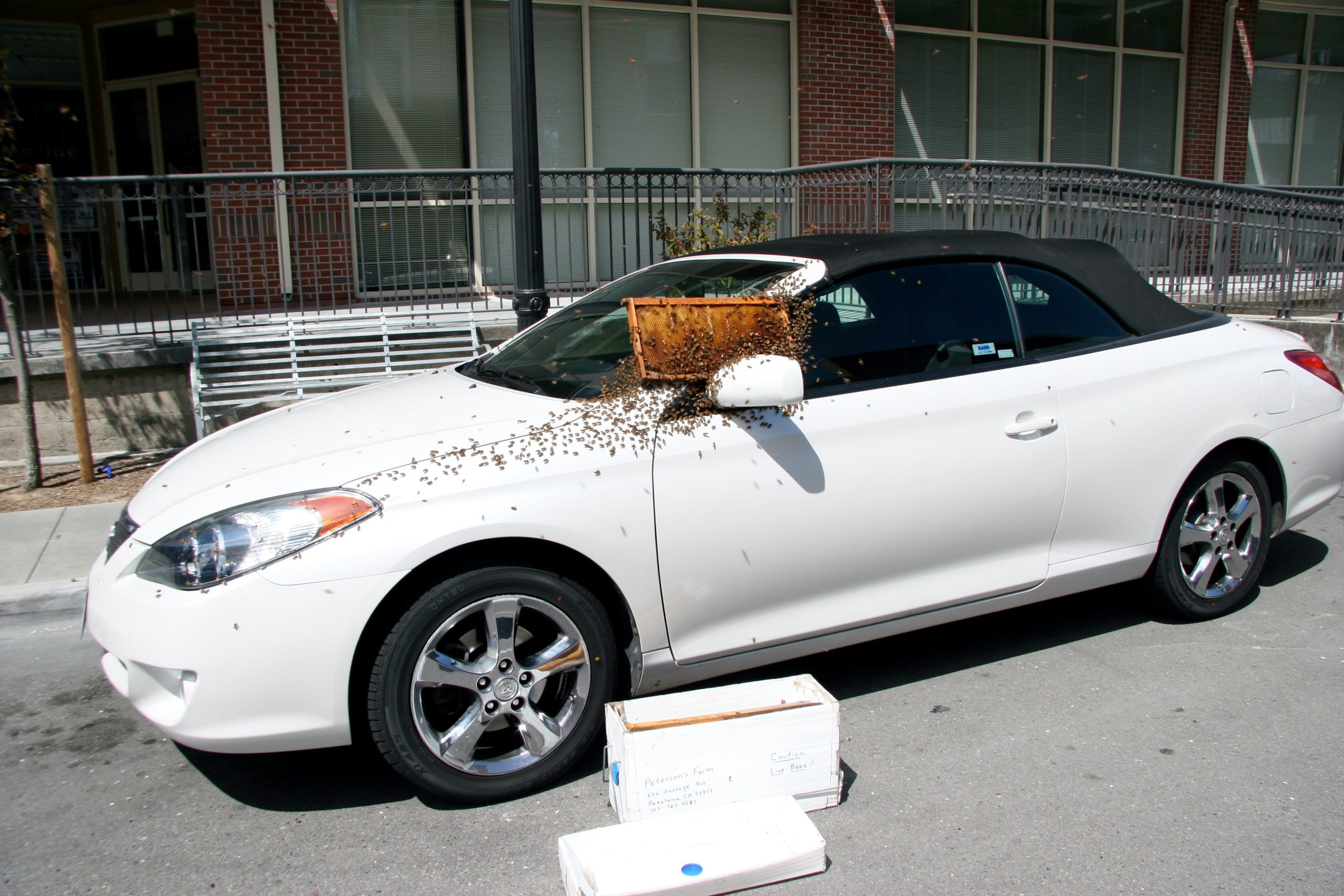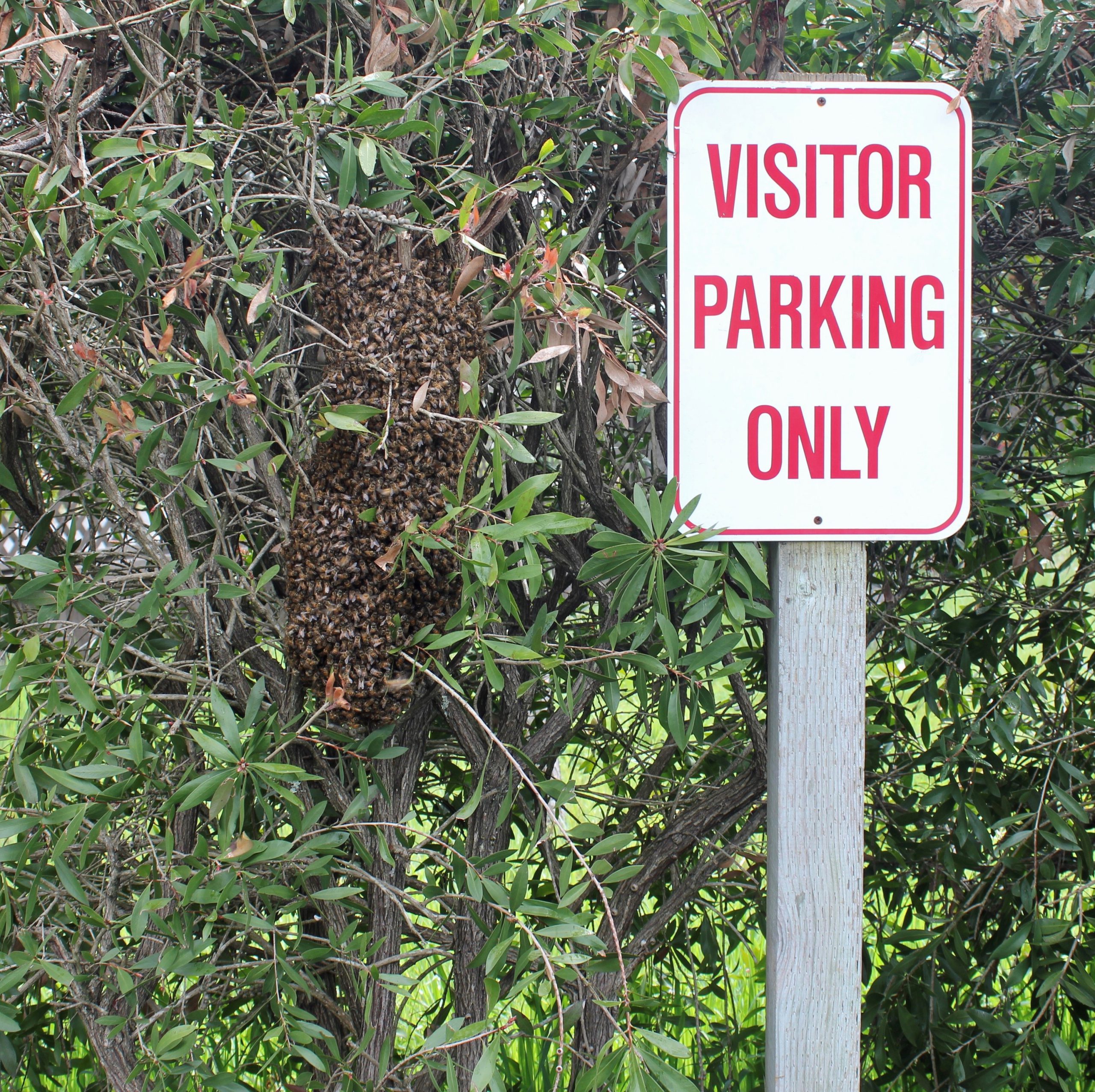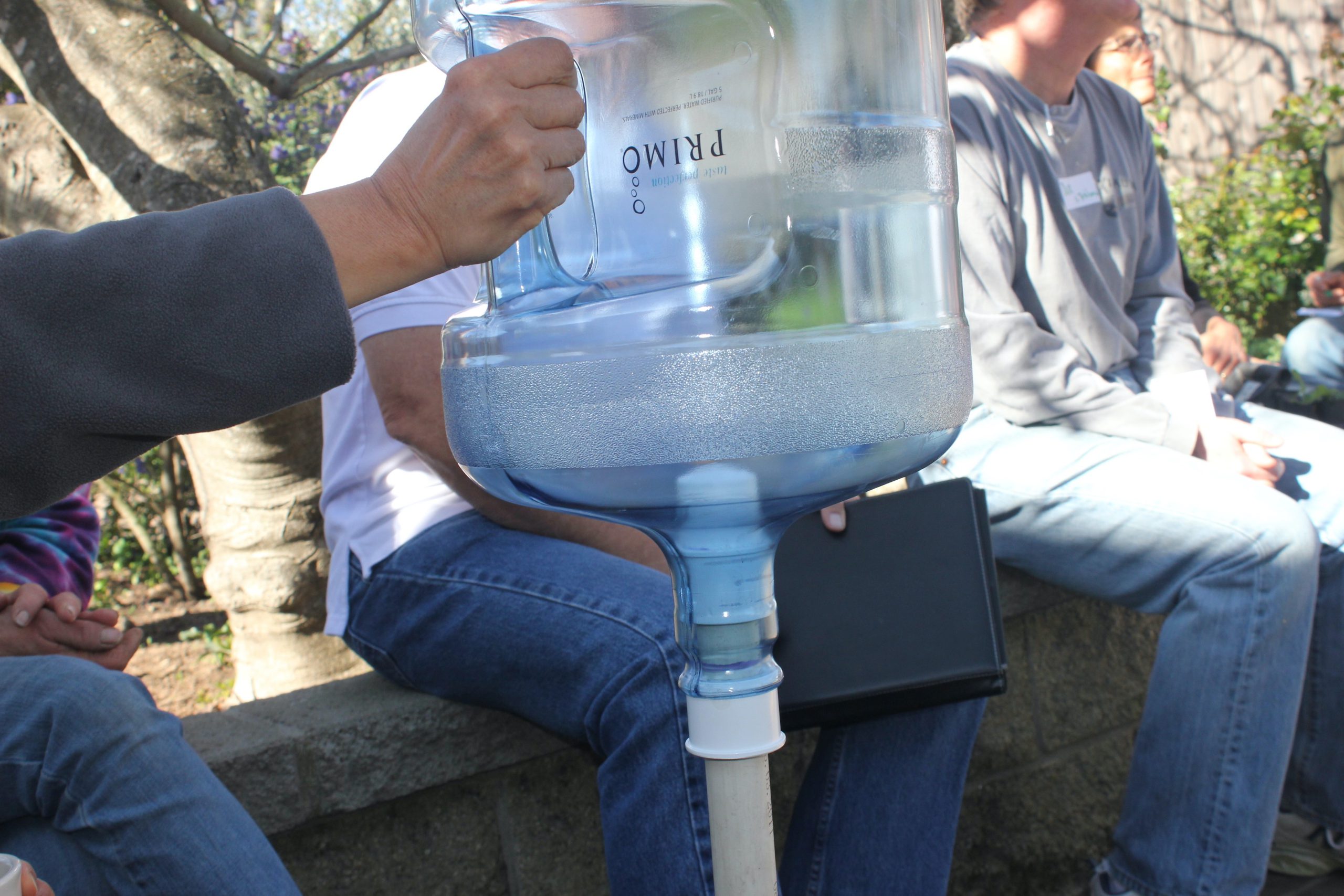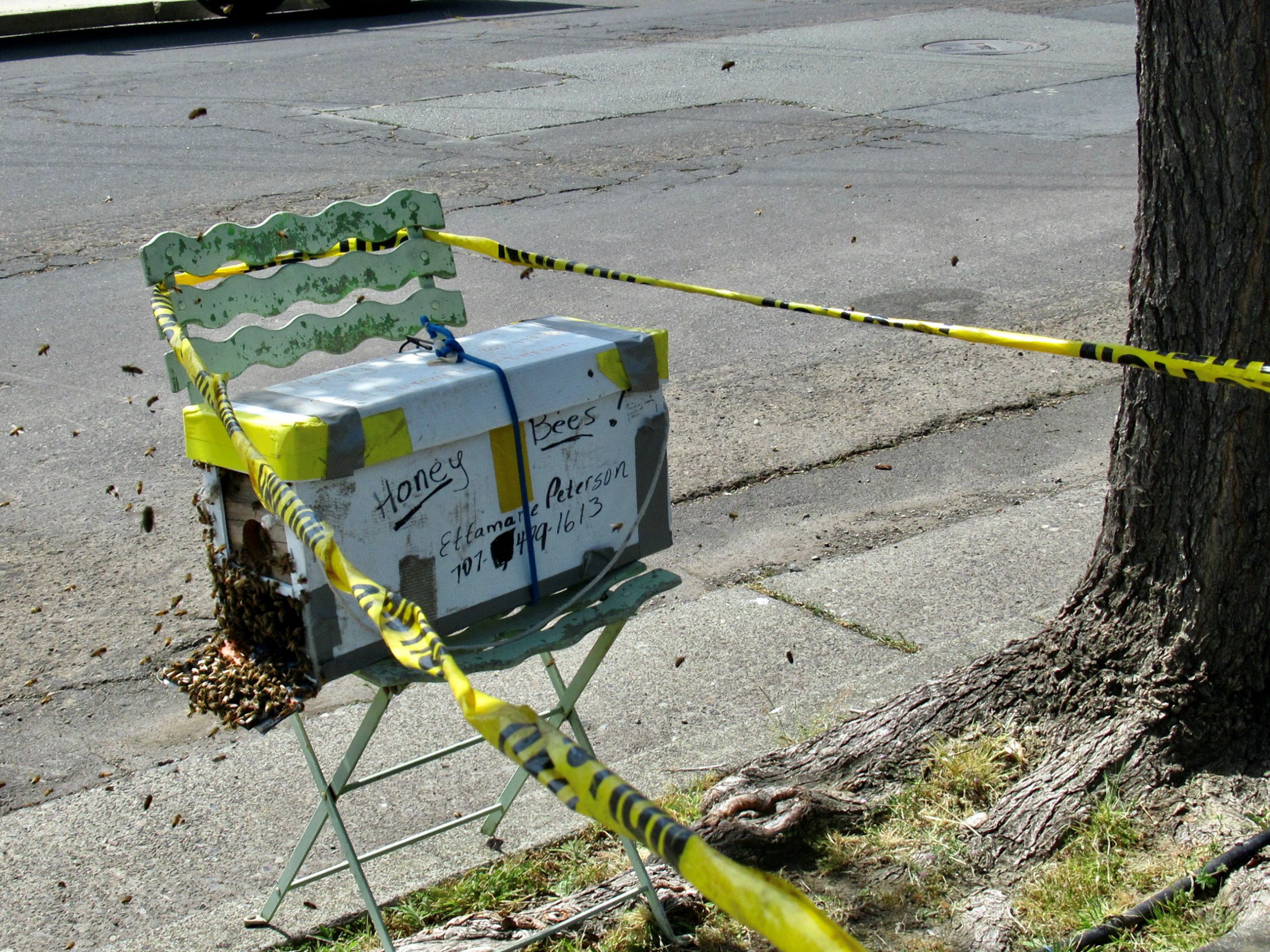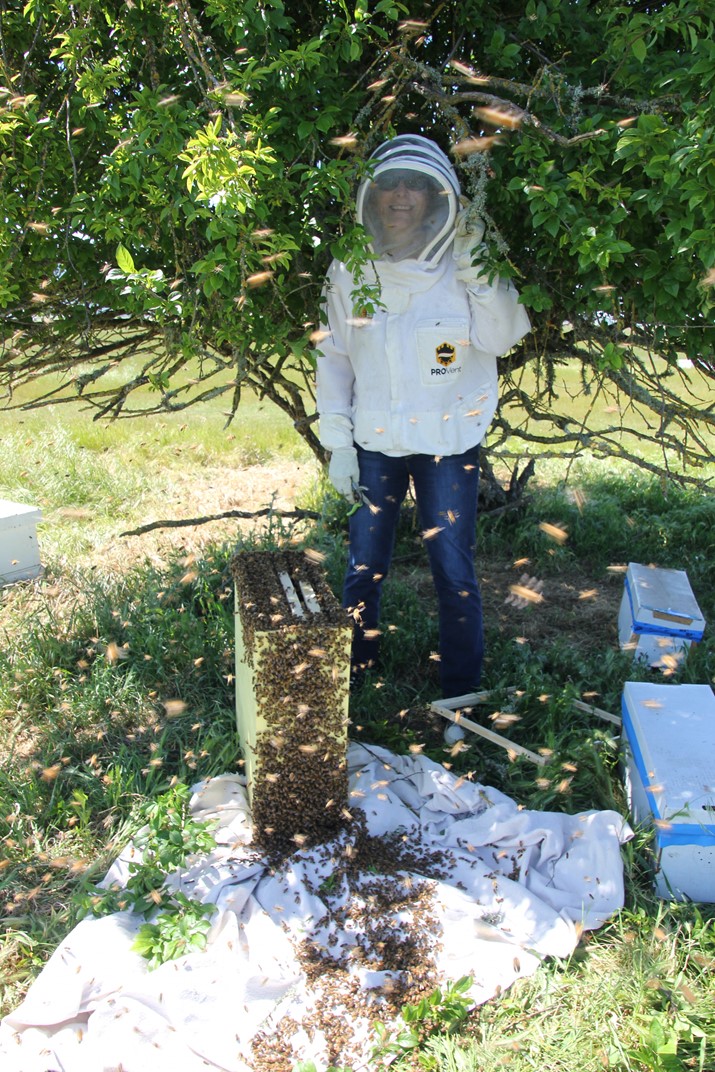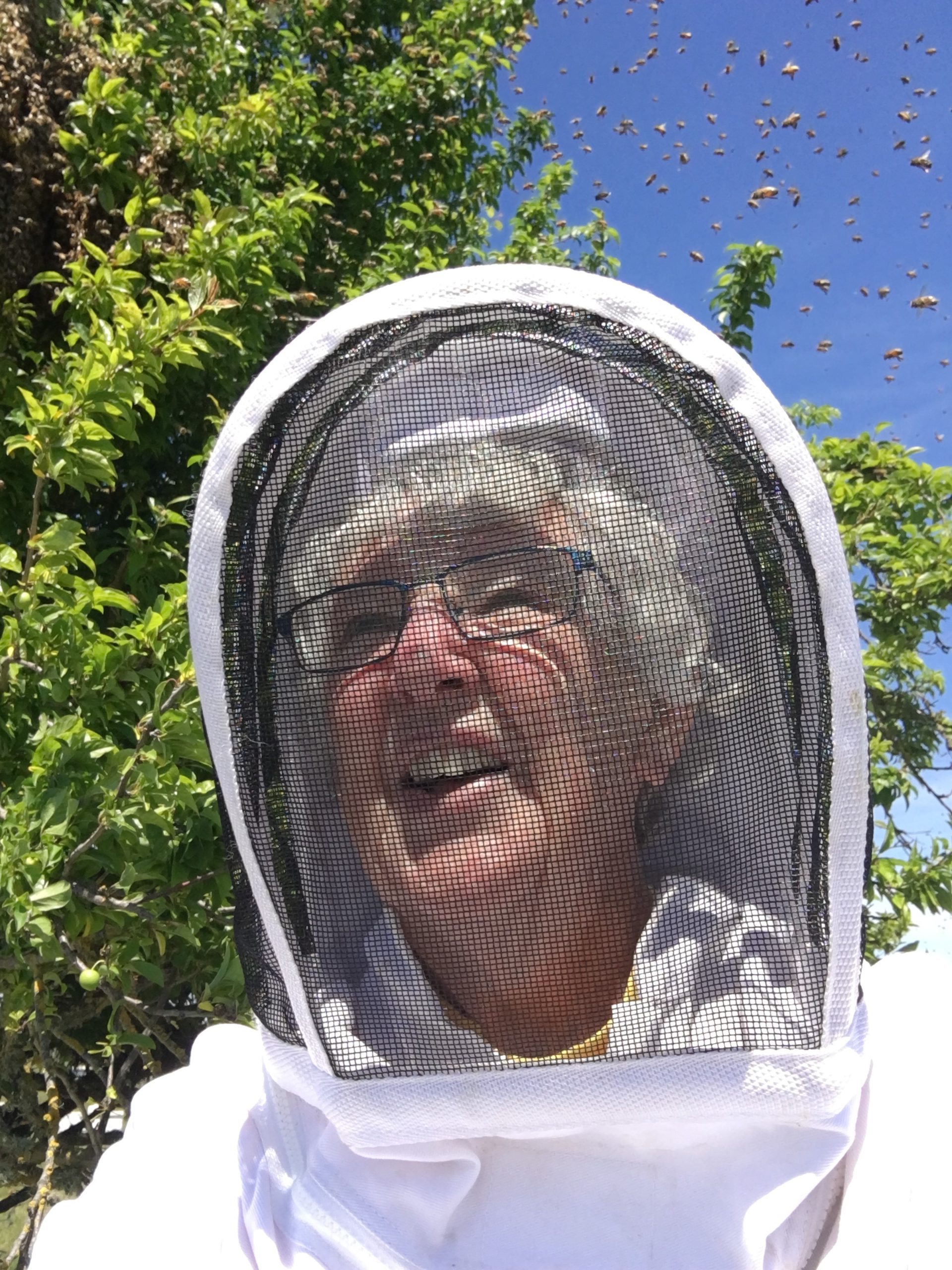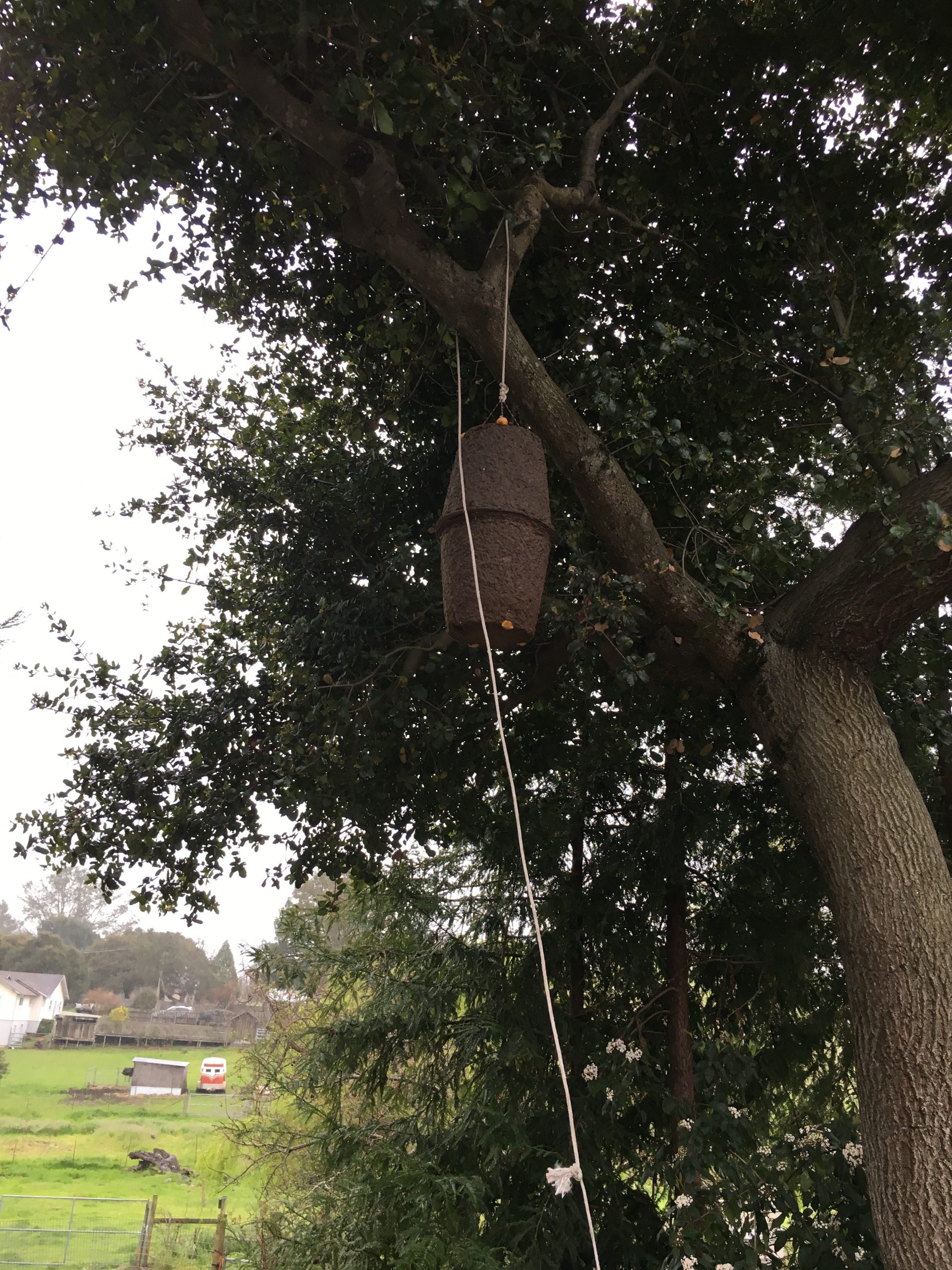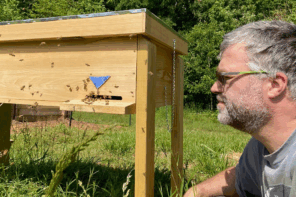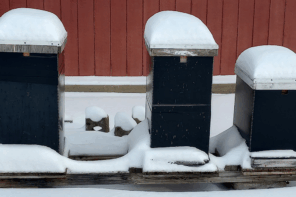Ettamarie Peterson
It’s just a few days past the Winter solstice and I am already getting geared up for swarm season. That is because it is my very favorite part of beekeeping. I am an absolute nut about catching swarms! To me it is like fishing; once you have caught your first fish, you are hooked! Catching my first swarm was what did it with me! I remember being superstitious about wearing a certain shirt because it seemed when I wore it, I would get a call for a swarm. I convinced myself that was a bit ridiculous as I did get calls on days the shirt was in the laundry, so I stopped trying to wear it so much.
Now I rely on getting the word out to anyone and everyone that might possibly spot a swarm. I use social media a lot to do this. My name is also on our local beekeepers’ association website swarm list which helps a lot. I am well known in our nearby town as a person to call when there is a swarm. The local police department has my contact information and calls me often. Once when I was headed home from a swarm call downtown during the annual street antique fair, I crossed a congested intersection despite the sign that clearly said, “Right Turn Only.” A policeman spotted me and pulled me over. I showed him my license and he called it in. As I was busy trying to find my proof of insurance he talked to the office. He came back and told me I was free to go as I was “the bee lady!” Was I ever happy that day!
When I get called for a swarm, I quiz the caller. I ask the size of the swarm, so I know what size box to take. Often the answer is something like there are at least a million bees so then I ask what size the swarm is in relation to a baseball, football, or basketball. If the caller says they have not landed yet so they can’t answer that, I say call back when they land as I cannot catch them while they are still flying.
The other questions I ask are when did the swarm arrive and how high up is it? These are important things to know because if they just landed, I know I probably have more time to get there. I need to know how high up, because if they are too high to reach with a ladder or my bucket on a pole. I must explain that they are not possible for me to retrieve. Often, I will hang a swarm trap in a nearby tree and explain that with luck the swarm will move into it.
My favorite swarms are chest high or lower. I have started asking people to take cell phone photos and send them to me. This is a big help letting me know what I am getting into.
Sometimes swarms are on fences near roads where parking is a problem. If the swarm is on private property, I make sure I have permission to go on there. Last Spring as I was taking a swarm off a fence, the farmer on the other side of the fence challenged me. I politely asked him if being on the roadside was trespassing and he had to admit it was not. I assured him I was not trying to steal the bees which had come out of a commercial beekeeper’s stand of hives on his property. I told him I was really doing him a favor because the bees might leave the fence and go into one of his neighbor’s buildings. I also assured him I had called the number that was stenciled on the beehives and got a recording and had left my name and number. He rode off on his four-wheeler satisfied that I was doing the right thing.
Before I leave for a swarm call, I pack up all the gear I think may be useful. I have a bucket with a list of essential items taped to the side, so I won’t forget something. The list reminds me to take my bee brush, large turkey feathers, clippers, Fischer’s Bee Quick, lemongrass oil and/or Swarm Commander, a spray bottle with sugar water, duct tape, caution tape, rope, an old sheet, a queen catcher and my business cards. I generally use the feathers rather than the bee brush, but the bee brush has a longer handle to reach farther. The feathers are good for painting Bee Quick above the swarm if I don’t want them to move up out of reach. The lemongrass oil works as an excellent attractant, and I lightly drop it on the top of the frames in my catcher box. Last season was the first time I bought Swarm Commander. I think it and the lemongrass oil are about equal as an attractant. Old drawn comb is one of the best attractants. I always take some along in my catcher box. When the bees are up in a tree or on a fence post I put the old comb by the swarm, and they generally climb onto it. If I see the queen is on the old comb, I put it in the box and then hold the box up next to the rest of the swarm. If she isn’t on the old comb, I shake the bees into the box and put the comb back next to the swarm gathering more bees. If the swarm has landed on the ground, I can put the box with the old comb down next to it and almost always they will walk right in. This is one reason I prefer swarm catching boxes that have bottom entrances. The old sheet is useful to cover the ground under the swarm box. You can see the bees better and the bees have an easier time walking into the box. Duct tape is used to make sure the lid stays on the box. I have accidently flipped the lids off in my car!
I have designed some boxes using the ends of old bee boxes and campaign poster boards. I really like these homemade boxes because the fronts and backs are solid and have the shelf to hold frames. I drilled air vents in the fronts and backs. I also screwed holders for ropes so I could hang these boxes in trees and hold them easily while climbing ladders.
The business cards are essential for several reasons. Very often a second swarm will come to the same spot within a day or so of the first one. The contact person knows your name and phone number. Sometimes the call will come a year later because there is a nearby bee tree that swarms annually or even a neighbor that has beehives that swarm annually. There is one lady that has called every year because the bees love her house. I told her it was because she lived at the top of B street! You want your contact information to be shared as much as possible. You also need to advise the contact person you will be returning at sundown when all the bees are in the box. Ask them to call you if they see the bees have all rejected the box and taken off. Sometimes the bees leave for unknown destinations and sometimes they just go back to their original spot. Put your name and phone number on the side of your swarm boxes. This gets your name out as a responsible beekeeper.
The caution tape is very often needed to warn people to go around the swarm catching box. I have caught many swarms near sidewalks. People appreciate the warning. Remember, when you are in public catching swarms, you are an ambassador for bees and beekeeping. Take time to talk to the public and explain about why bees swarm. Watching a swarm being caught is great entertainment! Sometimes the local newspaper will take your picture and write an article about the catch. I also carry an extra bee suit that can be offered to a person who volunteers to help me by holding the ladder or handing me things while I am up on a ladder. People love being part of the swarm catching! Some might even decide beekeeping could be the next hobby worth looking into. Come to think of it, a swarm catcher was the person that encouraged me to be a beekeeper 28 years ago. Maybe that’s another reason why I love swarm catching so much!
Author Bio
During the year when Ettamarie Peterson is not capturing swarms, she is the beekeeping project leader for Liberty 4-H, so many of the swarms are given to the young beekeepers. She is the editor of the Sonoma County Beekeepers Association monthly newsletter. She and her husband have a bee friendly farm just outside Petaluma, California where they raise a small herd of cattle, a flock of egg laying chickens, a small orchard, lots of bee friendly flowers and a huge vegetable garden.







